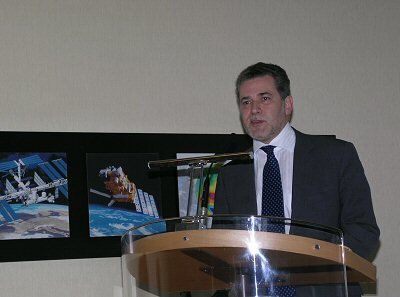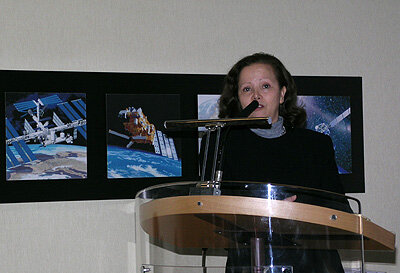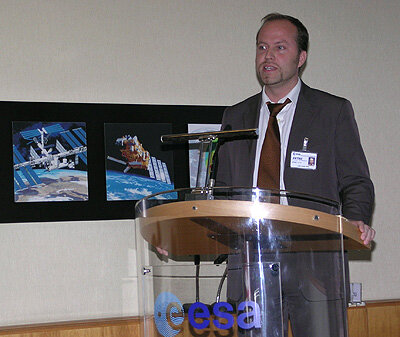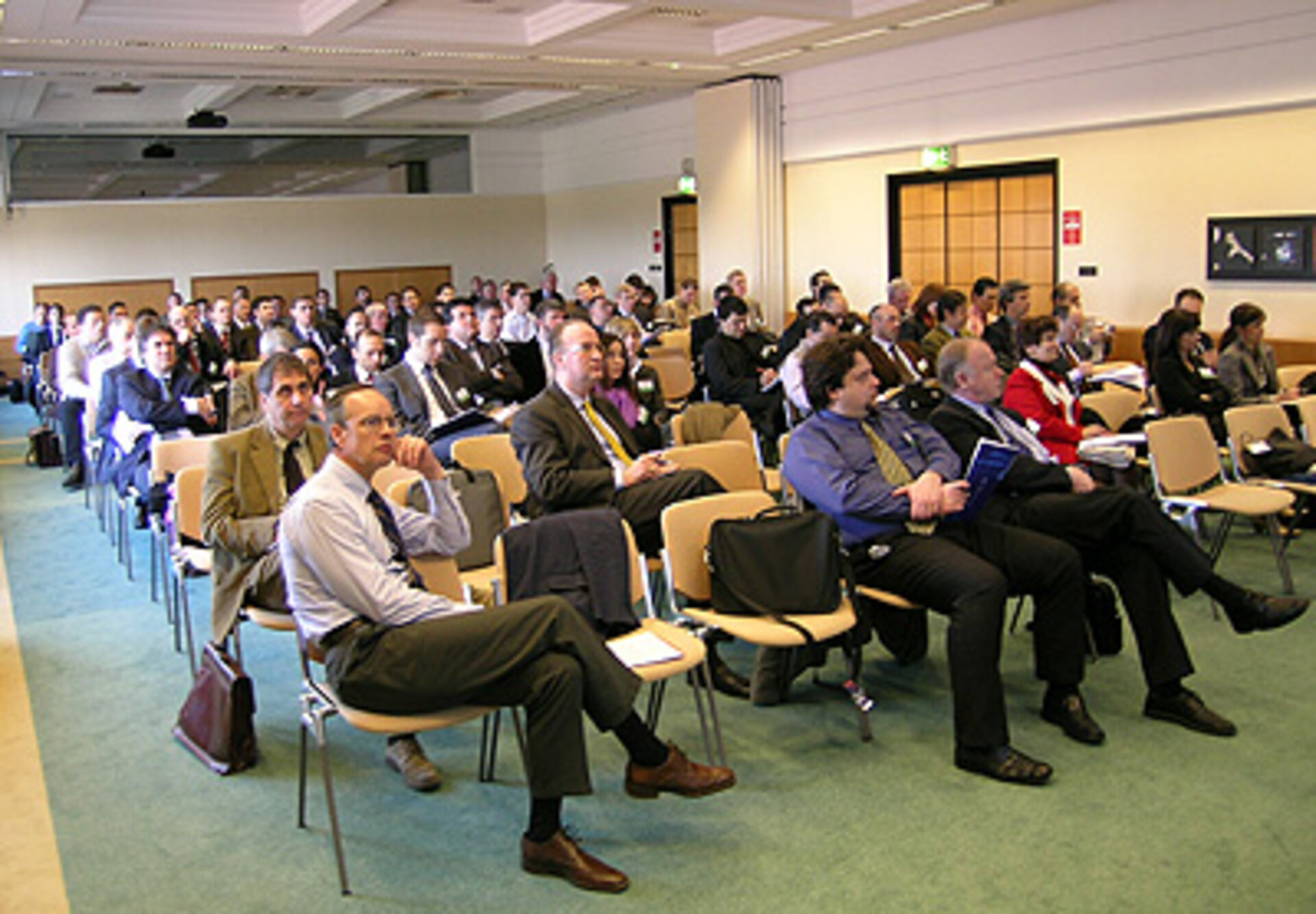Improving SME participation in Europe’s space business
More than 100 professionals from European small- and medium-sized enterprises, research institutes and space industry organisations met in Italy last week at the 4th SineQuaNet Workshop to discuss how the SineQuaNet project can increase the participation of SMEs in the European space business.
“SMEs are very valuable contributors to the supply chain in the space environment,” said Eric Morel de Westgaver, head of ESA’s Procurement Department, in his opening speech to more than 100 workshop participants, which also included representatives from some of Europe’s other space actors such as prime contractors, larger industries and one national embassy.
The workshop was held at ESRIN, ESA’s European Centre for Earth Observation in Frascati, Italy. It is the last of four workshops organised by ESA’s SME unit to define how the SineQuaNet can help SMEs overcome entry barriers to doing business with ESA and participating in Europe’s space programmes.
SMEs are innovative, dynamic and flexible

“Why is the contribution of SMEs so valuable to the work of the Agency?” Morel continued, “SMEs tend to be flexible and dynamic and in addition they have a great capacity for innovation.”
“On several occasions in recent years we have seen SMEs come up with really innovative ideas; ideas that were not coming from large businesses, which in general build more on their experience. Sometimes SMEs have provided breakthrough solutions which have played a very important role in the life of the Agency.”
“SME participation in very large European projects has not yet reached its full potential due to a number of entry barriers; this is one of the key reasons for the SineQuaNet initiative.”
ESA encourage more SME participation to its programmes
An estimated 700,000 SMEs are developing technology in Europe and 2,300,000 use technologies, yet only 1530 SMEs are registered with ESA as potential suppliers. Although the share of SME participation has grown during the past years, up from 2.5% in the period 1993-97, only 6.5% of the Agency’s 2005 budget went to SMEs.
ESA has a variety of initiatives to encourage SMEs to participate in its programmes, support their sustainability and help them to improve their skills and competences. These include the SME Initiative, the Innovation Triangle Initiative, the Technology Transfer Programme, the Incubator, the Earth Observation Market Development Programme and the Satcom Initiative of ESA Telecom.
SineQuaNet helps SMEs to enter the space market

SineQuaNet’s objective is to help SMEs overcome some of the entry barriers mainly through three different actions: improving their skills and competences, improving their competitiveness both within and outside the space market and facilitating the merging of ‘innovative clusters’ of specialised SMEs. To emphasise this third point Morel said, “you are stronger when you are together, SMEs cannot live alone”.
Nora Bougharouat, head of ESA’s SME-unit and instigator of the SineQuaNet project, added: “ESA’s SME Initiative consists of a variety of measures ranging from funding of technology actions to delivery of training. SineQuaNet complements the range of actions already covered under the SME Initiative and is tailored to improve the participation of SMEs in ESA programmes. It is not meant to solve all the problems SMEs may have, but to target some of the important major hurdles.”
“Its main purpose is to improve SMEs’ skills and competences and thus their participation to the space sector, and also to improve their competitiveness in the non-space market to help sustain their business and limit over-dependency on space.”
Bougharouat presented the 2006 SineQuaNet survey which sets out SMEs’ needs and also what is available in terms of expertise and major facilities within the framework of the project. Replies were received from 279 SMEs and based upon the results, SineQuaNet is now in the process of establishing a pool of experts and facilities for the use of SMEs.
Companies and organisations interested in proposing the use of their experts and measurement, test, and calibration facilities to the SineQuaNet network can do so by communicating this on the survey website (Questionnaire B).
Experts and engineers will be hired from the SMEs themselves, from larger groups, research organisations and other networks, as well as from within ESA. SineQuaNet will propose experienced engineers, and when needed adequate facilities, for the limited time needed by SMEs on a reasonable cost basis. SMEs receiving expert help will only have to pay for the support received without investing in or taking on any other responsibilities as would be the case if they had to employ staff.
Trials demonstrate SineQuaNet’s potential

During SineQuaNet’s first year two trials were executed to evaluate how to arrange support and identify the operational problems to be overcome. ESA engineers provided expertise to two companies: HOS-Technik GmbH in Austria and LEIRIOS Technologies in France. Neither company is yet involved in the space business but they do operate in technological fields that are of interest to ESA and relevant to space systems.
HOS-Technik develops speciality polymers for high-temperature composites and additives for the plastic and rubber industry. The space sector would be a very attractive area for expansion and ESA is always looking for new materials which appear promising for space applications. LEIRIOS develops automated software test tools, which could provide interesting solutions for the many software systems in space.
“We did an evaluation of LEIRIOS’ tool for use in space and as they are looking into this market it was very useful for them,” said Lars Wedin from ESA’s Software Engineering and Standardisation Section. Basically their automated test tools were set up and tried out on one of the most important on-board software systems, an attitude and orbit control system software, and the results were then evaluated.
“They basically knew nothing about space before, so it was a hurdle they couldn’t have overcome without our help.” He added that becoming familiar with the requirements of space systems and the inside of the space market were real benefits for the company, confirming the value of the support provided by SineQuaNet.
During the debates and discussion sessions, workshop participants addressed a number of key issues. Of major interest was how to start working with ESA and how to obtain a contract if a company has not previously worked with the Agency.
SMEs can benefit from partnerships
Morel also emphasised the importance of having a strategy when targeting an area and an Invitation to Tender (ITT) because, “by the time an ITT is published on EMITS it is often too late, don’t try to reply as many of your competitors will have been working on it for months.”
Instead, he stressed the importance of following the Intended ITTs (IITTs) presented on EMITS, often published months ahead of ITTs to keep industry posted on ESA’s future intentions for procurement. The IITT system also provides a facility to locate partners. “It is far easier to enter as a partner or in a consortium than as a prime contractor,” Morel stressed.
The different schemes to finance the SineQuaNet support were also addressed, and SME business people expressed what they would see as possible solutions.
The SineQuaNet expert support will be managed through a database of experts and facilities, to be available within this year.
The presentations from this workshop as well as from the previous three are available for download as pdf documents (see right navigation bar).
Note to editors:
SineQuaNet, Space Intelligence, Engineering and Quality Network, is an expert network providing technical and engineering support to small- and medium-sized enterprises (SMEs) in ESA Member States and European Cooperating States, who already are operating in or wanting to enter the space sector. It was initiated at the end of 2005 by ESA’s SME Unit and is co-financed by the EC Directorate-General, Research and Technology. The network is expected to be fully operational from the beginning of 2008. SineQuaNet is under the direct coordination of ESA’s SME Unit.




